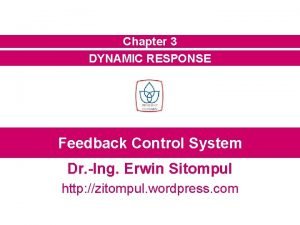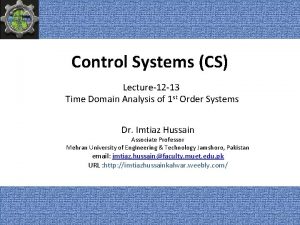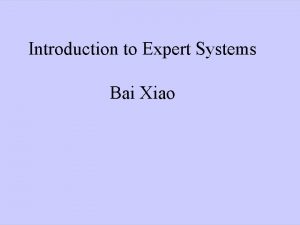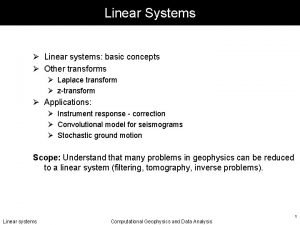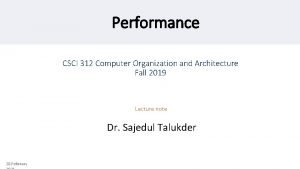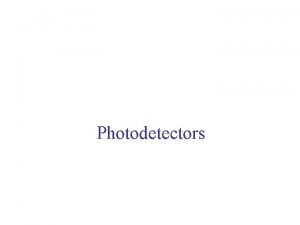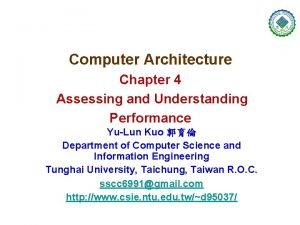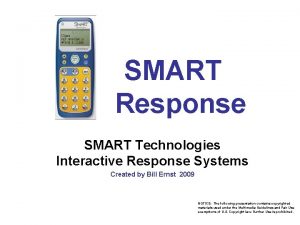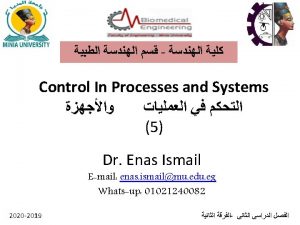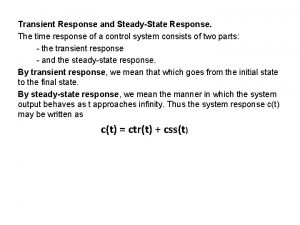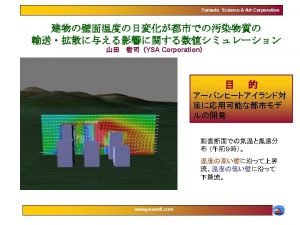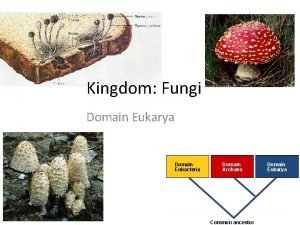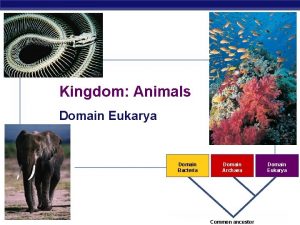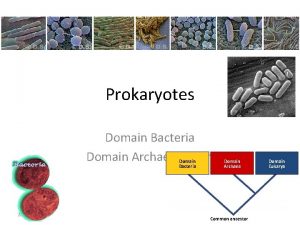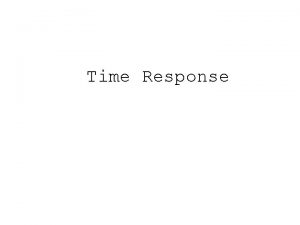Time Domain System Dynamic Response Time domain dynamic























- Slides: 23


Time Domain System Dynamic Response

Time domain dynamic response (1) • Because time is used as an independent variable in most control systems, it is usually of interest to evaluate the state and output responses with respect to time or, simply, the time response. • In the analysis problem, a reference input signal is applied to a system, and the performance of the system is evaluated by studying the system response in the time domain. • Time response: is the response given by the system which is function of the time to applied excitation.

Time domain dynamic response (2) The time response of a control system is usually divided into two parts: the transient response and the steady-state response. All real, stable control systems exhibit transient phenomena to some extent before the steady state is reached

Time domain dynamic response (3) • Steady state error: it is the difference between the desired output and actual output (reference input) at infinite time or at steady state. ess=lim t→∞ (r(t)-c(t)) Where : r(t) desired output c(t) Actual output

Time domain dynamic response (4) Advantages of studying time dynamic response: - Classifying the response of some standard systems to standard inputs can provide an insight into more complicated systems. o Ex system: first order – second order o Ex inputs: unit- ramp- sinusoid - Time domain standard Characteristics of a standard dynamic response can be used for inferring system specifications. - Response to simple inputs can be used for system identification, i. e. for black box modeling.

Time Domain System Dynamic Response • Transient and Steady-State Dynamic Response Analyses - Standard input signals - standard Time dynamic response characteristics (Standard First order control system) (Standard second-order control system) - Steady state error analysis OGATA ch. 5

Standard Input Signals TYPICAL TEST SIGNALS FOR THE TIME RESPONSE OF CONTROL SYSTEMS automatic control system(KOO) ch. 5 pg. 254

TYPICAL TEST SIGNALS FOR THE TIME RESPONSE OF CONTROL SYSTEMS • Unlike electric networks and communication systems, the inputs to many practical control systems are not exactly known ahead of time. • This poses a problem for the designer, because it is difficult to design a control system so that it will perform satisfactorily to all possible forms of input signals. • For the purpose of analysis and design, it is necessary to assume some basic types of test inputs so that the performance of a system can be evaluated. • By selecting these basic test signals properly, not only is the mathematical treatment of the problem systematized, but the response due to these inputs allows the prediction of the system's performance to other more complex inputs. • To facilitate the time-domain analysis, the following deterministic test signals are used. automatic control system(KOO) ch. 5 pg. 254

Name Step - instantaneous change in the reference input. - its initial instantaneous jump in amplitude. Mathematical formula Time-domain shape Advantage - Tests system's quickness in responding to inputs with abrupt changes. - application of numerous sinusoidal signals with a wide range of frequencies Ramp - tests how the system would respond to a signal that changes linearly with time. Parabolic - one order faster than the ramp function. - changes constantly with time.

Standard Time dynamic response characteristics (Standard First order control system) (Standard second-order control system) System Order / Type

System Order / Type (1) • Input-output relation: 1. Differential Equation : order of the system is the higher power of the diff. Eq. 2. Transfer Function (Three Forms): 1. Polynomials 2. pole-zero form 3. time constant form

System Representation

System Representation 2. Time-constant form

System Order & Type (2) Ø Forward-Path transfer function G(s) Ø System order : number of poles of the system (order of system differential equation. Ø System type: Number of poles at origin s=0.

System Order & Type (3) • Example






Unit step Response Unit Ramp Response Unit parabolic response

Time-domain dynamic response First-order system Unit impulse response e(t)=1 -c(t) at t=∞ , e(t)=1 Important Notes: - The step input yields the desired information about the speed of transient response. - It is observed that the speed of response is inversely proportional to the time constant r of the system. - The ramp and parabolic inputs do not give any additional information regarding the speed of response. (derivatives into step response) - However, the steady state errors are different for these three different inputs. For a step input, the steady state error ess is zero, - for a velocity input there is a finite error equal to the time constant of the system and - for an acceleration input the steady state error is infinity.
 What is dynamic response in control system
What is dynamic response in control system Data domain fundamentals
Data domain fundamentals Natural and forced response
Natural and forced response What is natural response
What is natural response A subsequent
A subsequent Unit step response
Unit step response Control system
Control system Domain co domain and range of a relation
Domain co domain and range of a relation Z domain to frequency domain
Z domain to frequency domain Z transform time reversal
Z transform time reversal Table of z transforms
Table of z transforms Domain specific vs domain general
Domain specific vs domain general Domain specific software engineering
Domain specific software engineering Problem domain vs knowledge domain
Problem domain vs knowledge domain S domain to z domain
S domain to z domain Specification gap is gap between
Specification gap is gap between Dynamic dynamic - bloom
Dynamic dynamic - bloom Start time end time and elapsed time
Start time end time and elapsed time Decreasing response time almost always
Decreasing response time almost always Retail storage with customer pickup
Retail storage with customer pickup Photodiode current equation
Photodiode current equation Response time in computer architecture
Response time in computer architecture Interactive voice response system randomization
Interactive voice response system randomization Smart response clickers
Smart response clickers
